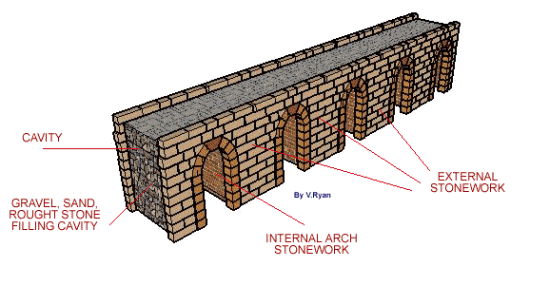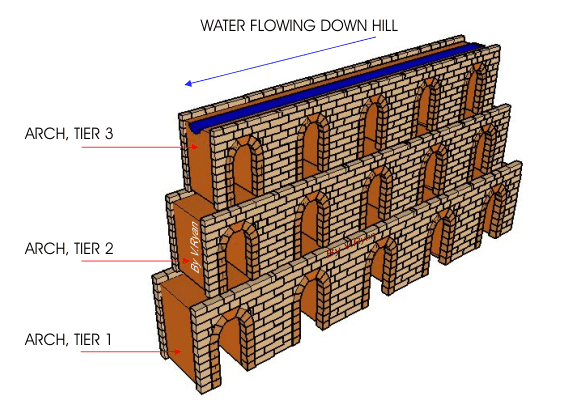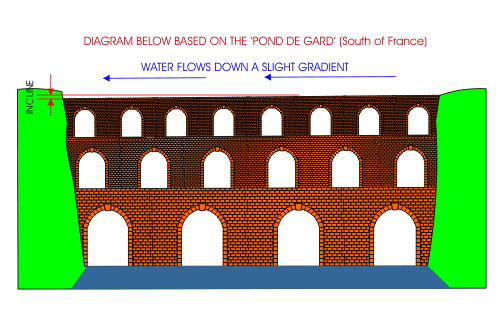| CLICK HERE FOR INDEX PAGE | |
| ROMAN BRIDGE AND AQUEDUCT CONSTRUCTION | |
| V. Ryan © 2006 - 2009 | |
|
The Romans used stone arch technology to build long bridges and high aqueducts. The diagram below shows a span of five arches. Again accurately cut stone has been used on external faces and the cavities have been filled with gravel, sand and rough stone. Furthermore, the Romans developed techniques such as constructing rows of arches on top of other arches. This meant that they could build high bridges and aqueducts by stacking rows of arches on top of each other. |
|
 |
|
|
A three tier aqueduct is shown below. The Romans were great engineers and were able to construct large structures such as aqueducts very accurately. The Romans used aqueducts to transport water across valleys to towns. Aqueducts must have a slight incline (angle) in order that the water flows down hill, by the force of gravity. The Romans were capable of building to a consistent accuracy over long distances. |
|
 |
|
 |
|
|
QUESTIONS: |
|
| CLICK HERE FOR STRUCTURES INDEX PAGE | |